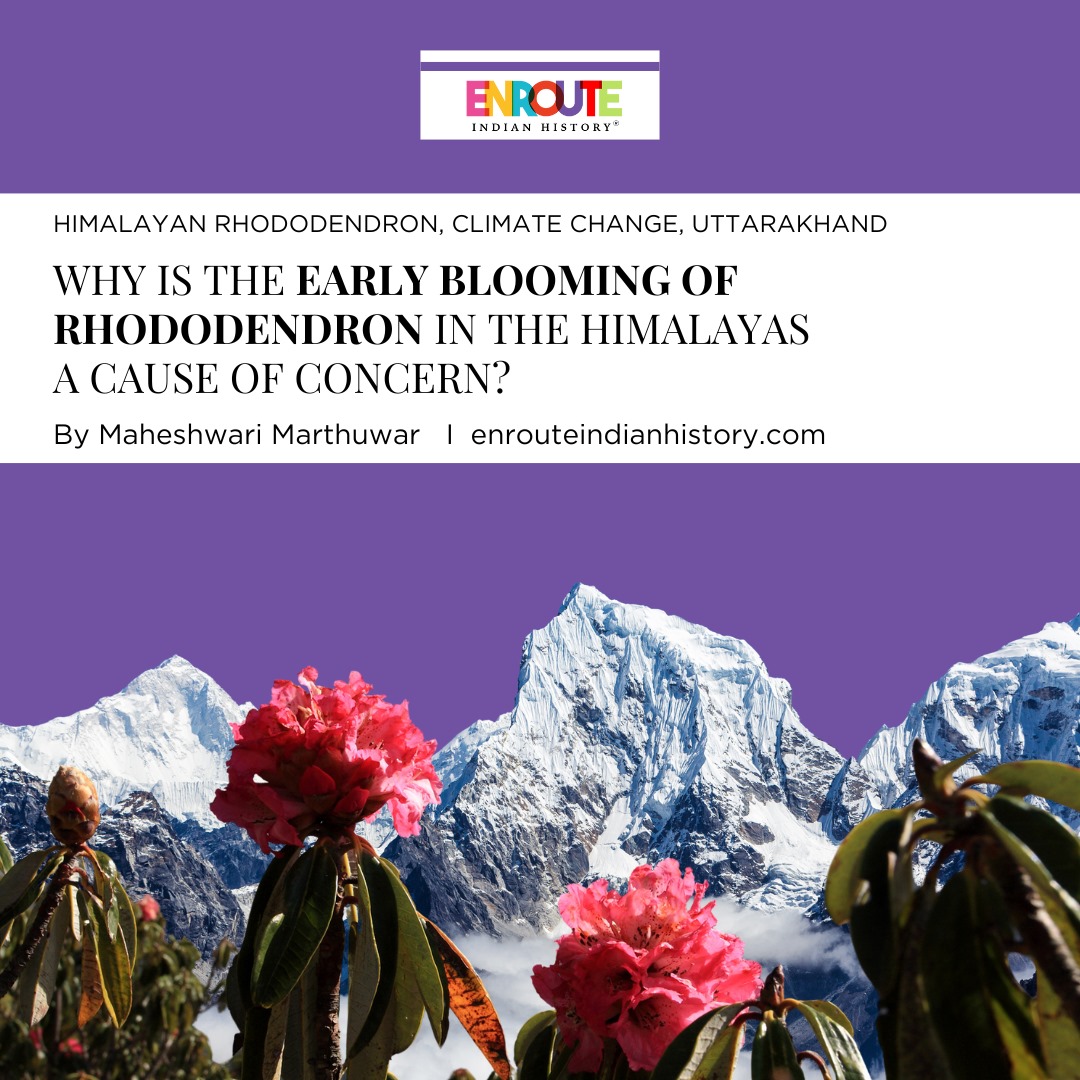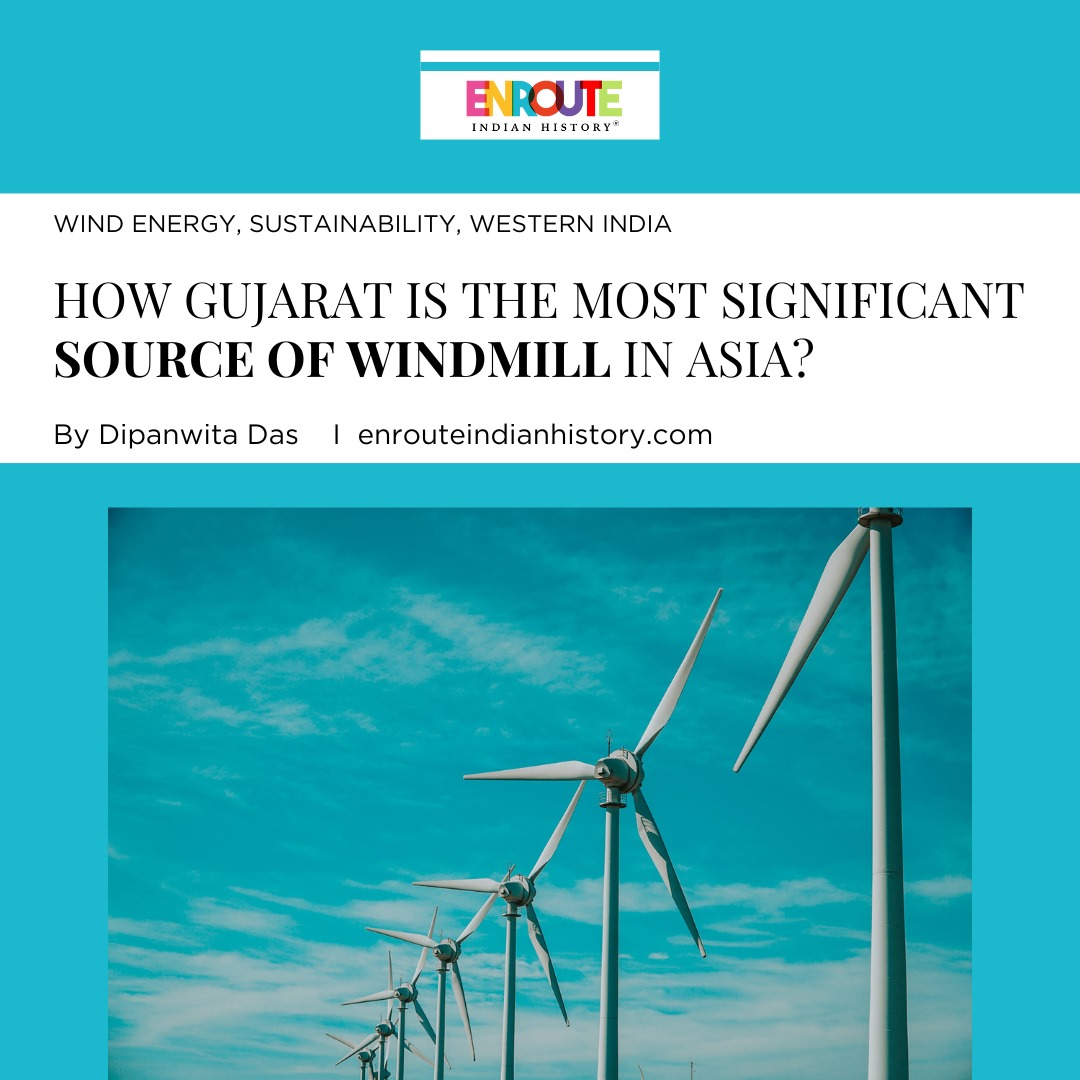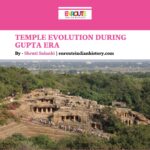
Indian royalty is a topic of interest for many. The royal clothes, crowns, jewellery, flags and even royal insignias or emblems are loved and studied by people. Royal insignias and seals are a part of history and hence a subject of interest. They stand as a sign of authority. All over the world royal emblems and seals evoke a sense of power, respect and even pride. They stand as a symbol of the existence of that particular dynasty or region. Over the years these emblems have become a part of history and heritage. One such royal insignia that has become an integral part of Indian heritage is the motif Gandaberunda. This mythical creature finds references in various literatures and regions and is an enigmatic figure even today. Today it is the official seal of the government of Karnataka and also features on other official organizations. But the origin of this motif is shrouded in mystery and its emergence is a tale of absolute power.
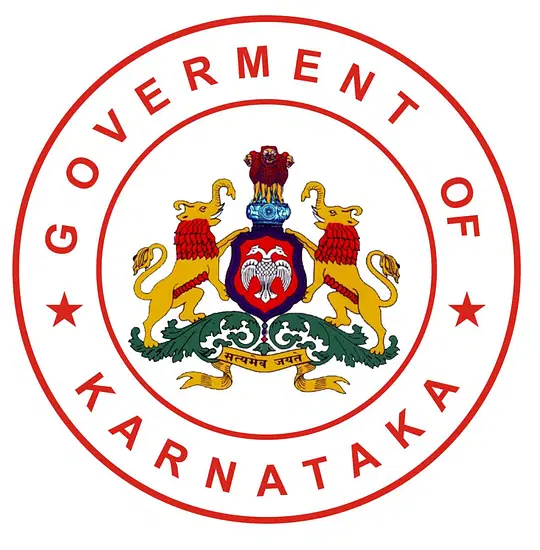
The state emblem of Government of Karnataka
(Source- Deccan Herald, 2019)
Mythology of Gandaberunda
When Vishnu took the form of Narasimha to kill the demon Hiranyakashipu to save his follower, Pralhad, he became part lion and part human. After killing the demon his fury increased and Narasimha was destroying the whole world. He was furious and not calming down at the pleas of his followers. The gods were terrified and asked Shiva to intervene and calm the furious deity. Shiva took the form of Sharaba, an elephant-headed lion. Sharaba tried to calm the angry Narasimha but got attacked instead. Narasimha changed into Gandaberunda, a bird with two heads. This Gandaberunda was enormous in size and had lots of strength and defeated Sharaba. It was fierce and destructive. This tale is recorded in mythology in the Puranas.This large terrifying mythical bird is said to eat the flesh of composite Sharaba. In some sculptures, he is depicted holding Sharaba with his talons.
Iconographic description of Gandaberunda
The composite figure of Gandaberunda is a two-headed eagle. Its talons are depicted holding elephants as a show of its strength. Sometimes it holds snakes in its beaks. The keval Gandaberunda motif is of a bird whereas the anthropomorphic figure depicts the torso of a man and the two heads of eagles. Here it holds two elephants in its two hands. It’s commonly depicted to show a symmetrical image and has long tail feathers like a peafowl. Sometimes it is depicted with elephants clutched in its beaks as well as lions to show its magical strength. Its claws are sharp and can hold the weight of huge animals as well as other mythical beings. Its assets have supreme dominance and look terrifying. The bejewelled Gandaberunda motifs used in pendants look majestic.
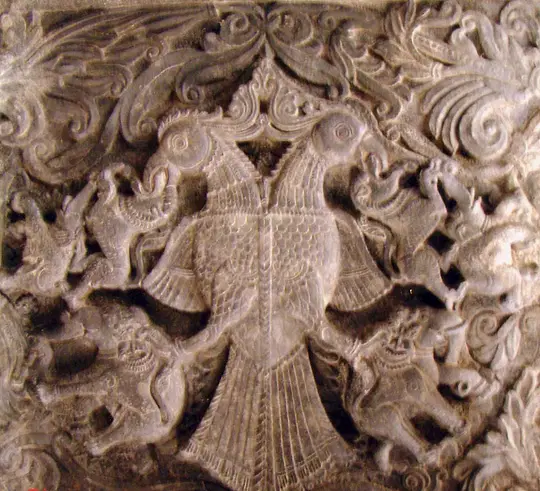
The depiction of Gandaberunda on the ceiling of Keladi temple
(Source- Deccan Herald, 2019)
Indian heritage of the motif
The word Gandaberunda is derived from Sanskrit. Ganda means warrior and berunda or bherunda means terrifying or frightful. It means terrible to behold. This fierce form of Gandaberunda has been spotted in several countries in different periods in Babylonia, Germany, Russia, Austria, Persia and Sri Lanka. It is also spotted in Dutch and Spanish colonies and Armenia. The two-headed eagles were also discovered in the ruins of the Hittite kingdom. It was first seen in the Indian subcontinent at the base of a stupa in Sirkap (Taxila) in present-day Afghanistan. John Marshall thought that the motif of Gandaberunda occurs for the first time in the Hittite sculptures and it was brought to India by the Scythians though the mentions of two-headed fierce-looking eagles are found in Panchatantra and Mahabharata. (Gowda 2019).They brought the motif to north India from where it reached the Deccan and found importance in the region of Karnataka. (Rosen-Stache 1972)
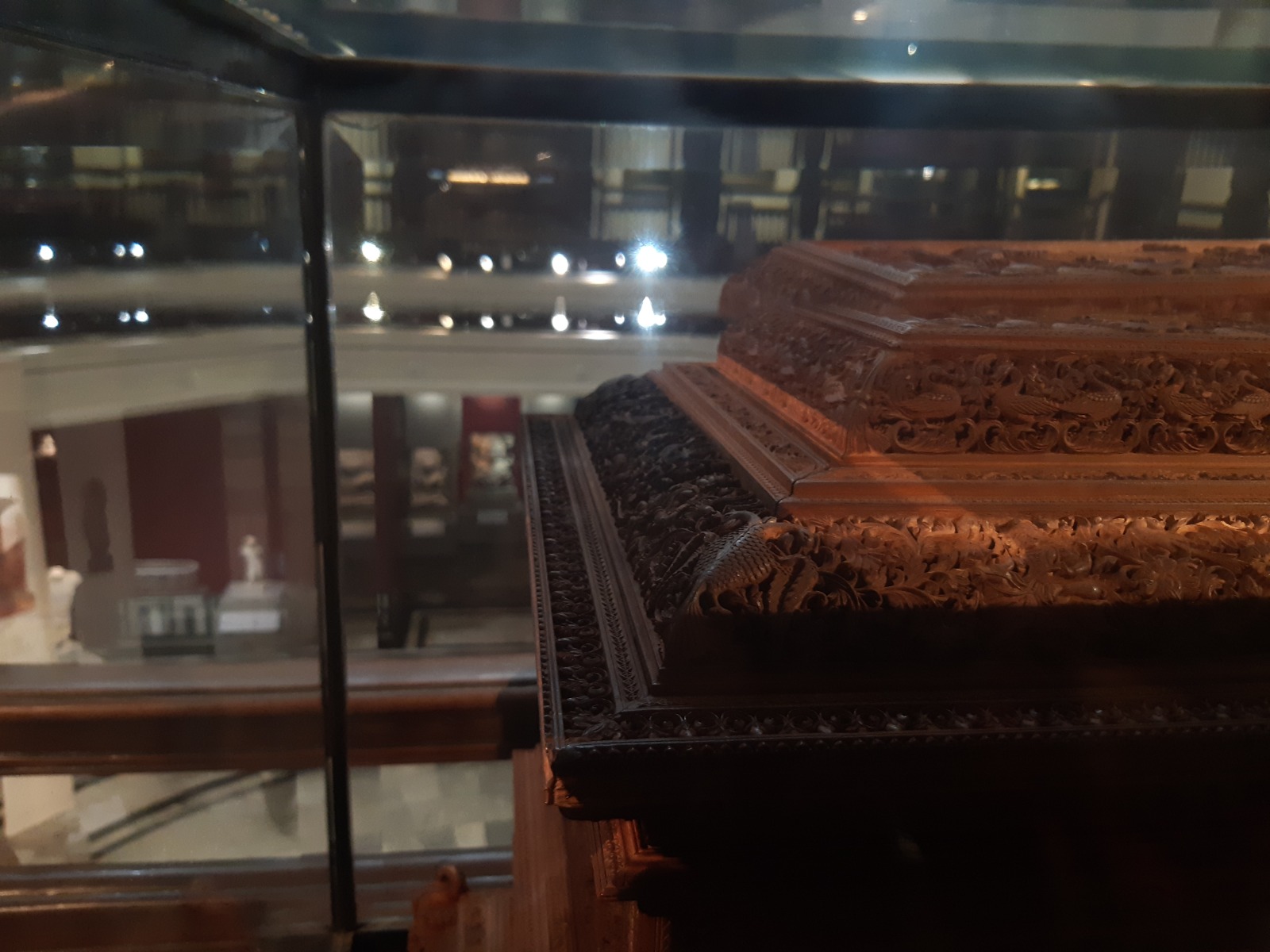
The motif seen on the carving of this sandalwood box
(Clicked by me)
Gandaberunda and its depictions in Karnataka
In Karnataka, the first depiction of Gandaberunda is seen near a temple in Shimoga. The motif of Gandaberunda is depicted on a tall pillar in front of Jagadekamalleswara temple built by the governor of Banavasi Chamundaraya in the 9th century. He was the vassal of Chalukyan king Someshwara I. The inscription associated with this temple states that ‘no one on earth is equal or will be equal to the Gandaberunda in virtue, truth and liberty’. It tells about the significance of the motif in the Chalukyan dynasty. Several south Indian dynasties such as Chalukyas, Kadambas, Hoysalas, Keladi chiefs, Vijayanagar rulers and Wodeyars used this motif on their flags or as official emblems.
The Hoysala kings Vishnuvardhana and Vira Ballal II, Narasimha II, Vijayanagar ruler Devaraya II and Kakatiya king Pratap Rudradev had Gandaberunda as their title or prefix. The ceiling of the Rameshwara temple at Keladi has a depiction of Gandaberunda. Here it’s shown holding elephants in its beaks and in each claw. The Keshav temple at Belur has two sculptures of Gandaberunda. Vijayanagar king Achyuta Deva Raya minted gold coins depicting Gandaberunda holding 4 elephants one each in its beaks and talons, it was supposed to depict the mighty Vijayanagar empire subduing the four sultanates of Deccan, Bidar, Bijapur, Golconda and Ahmednagar.
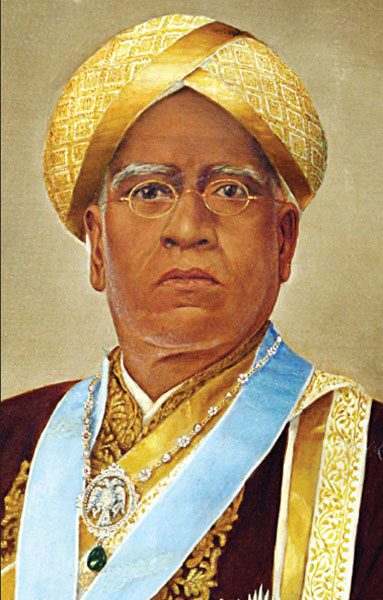
Dewan Sheshadri Iyer
(Source- Star of Mysore, 2014)
Contemporary use of the motif
Indian royalty has always made use of emblems which have some historical context to them or are a part of their heritage and pride. Similar sentiments could be witnessed when the Wodeyars made the motif of Gandaberunda as their official emblem. Years later in 1881, this stunning motif was put on the crest of the princely state of Mysore. In 1892, the order of the Gandaberunda was instituted by the Wodeyar king Chamarajendra Wodeyar. It was conferred in recognition of service rendered in public services and cause of learning. This order was rejected by the Britishers but the order was made in such a way that the chain was to be worn around the neck with the pendant close to the neck, which showed its real place and value.
The Mysore royal family, the Wodeyars have kept the Gandaberunda motif alive through its depiction on various heritage buildings, palaces and ornaments. In the year 2018 when the Mysore Dussehra celebrated its 400th year, this mighty bird completed the 500th year of its adoption in an emblem. A 10-foot flower display of the magnificent bird was the star of the flower show. In the Dussehra celebrations and parades, Gandaberunda has a significant place. The Gandaberunda pendants are often worn by the royal family. It is also painted on the trunks of elephants who are a part of the Dussehra festival. The current heir of the Wodeyars, Yaduveer Krishnadatta Chamraja Wodeyar has designed his logo YKC against the backdrop of Gandaberunda.
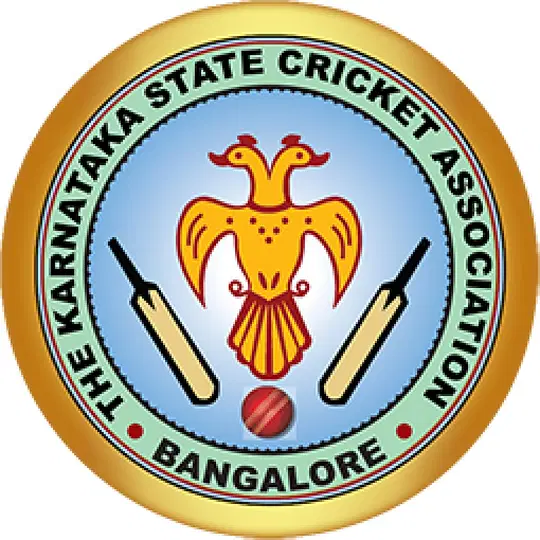
The logo of Karnataka State Cricket Association
(Source- Deccan Herald,2019)
Today this auspicious motif is seen almost everywhere in Karnataka, a true homage to its place in the rich heritage of the region. After being officially adopted as the state emblem of the government of Karnataka in 1956, it is seen on every government building, and official document as a seal. The Karnataka State Cricket association has it on the logo and the logo of Bengaluru FC, the team in the Indian super league, proudly has the Gandaberunda on it. INS Mysore has the crest of Gandaberunda. Recently, the legislators in the Karnataka state assembly were given unique badges. These badges are gold-coated metal badges depicting the mythical bird in Karnataka’s heritage, Gandaberunda. It was worn around with pride and respect. From the government seals to the bus tickets, Gandaberunda is seen everywhere. In every place and form, it exudes the mysterious and powerful aura surrounding it. An integral part of Karnataka’s and Indian heritage, this mythical bird has come a long way from being depicted on war flags to the logo of state football teams, and even in that, it evokes respect for it.

The royal darbar of Mysore palace and the motif of Gandaberunda on the throne
(Source – Star of Mysore,2023)
Indian royalty has been an integral part of Indian heritage. Heritage is something that is passed down from generation to generation, evoking a feeling of belonging and harmony. It’s either in material form or in the form of customs, traditions and rituals. Gandaberunda is an integral part of Karnataka’s material heritage. It has been associated with the region for hundreds of years and now is an important motif with official power. From being used on the flags and emblems to represent dynasties, depicted on temples and pillars to being the official emblem of the Mysore state to finally being the state emblem of the government of Karnataka, the motif has remained unchanged. This symbol of power is worn as necklaces, pendants and even woven on sarees and garments as an auspicious symbol that is supposed to ward off the evil spirits and protect its wearer. Being the emblem of the state, it continues to instil a sense of pride amongst the residents. The Gandaberunda on the throne of the Wodeyar dynasty displays its real place in the heritage of Karnataka. This powerful bird takes its flight with magical strength in its wings and centuries of history on its wings.
References
Gowda, Gomathi. “Gandaberunda: Aesthetic representation of the mythical bird.” International Journal of Innovative technology and Exploring Engineering (2019): 408-412.
P.N.Naidu. “Depiction of Gandabherunda motif in Vijayanagar art.” Indian History Congress (1997): 882-886.
Sastri, Dr.S.Srikanta. “Evolution of the Gandaberunda .” Quarterly Journal of Mystic Society (n.d.).
Tendulkar, Mahesh. Gad Mandiranvaril Dwarshilpa. Pune: Snehal Prakashan, 2011.
Works Cited
Gowda, Gomathi. “Gandaberunda: Aesthetic representation of the mythical bird.” International Journal of Innovative technology and exploring engineering, vol. 8, no. 7C2, 2019, pp. 408-409.
Rosen-Stache, Valentina. Gandaberunda. The quarterly journal of the mythic society, 1972.
https://www.srikanta-sastri.org/evolutionofthegandabherunda
https://www.deccanherald.com/india/karnataka/gandaberunda-flights-of-the-two-headed-bird-772554.html
https://starofmysore.com/order-of-the-gandaberunda/
https://medium.com/@ayathamarajuspandana/the-gandaberunda-and-sharabha-most-fiercest-mythical-creatures-from-the-past-ac6e7d7b0306
https://www.indica.today/long-reads/a-unique-motif-in-indian-art-part-ii-gandabherunda/
https://balancedreport.in/gandabherunda-art/
https://www.thenewsminute.com/news/pride-mysuru-history-behind-two-headed-bird-bengaluru-fc-s-logo-80837
https://karnatakahistory.blogspot.com/2017/09/gandabherunda-royal-bird-of-karnataka.html
- May 15, 2024
- 6 Min Read



